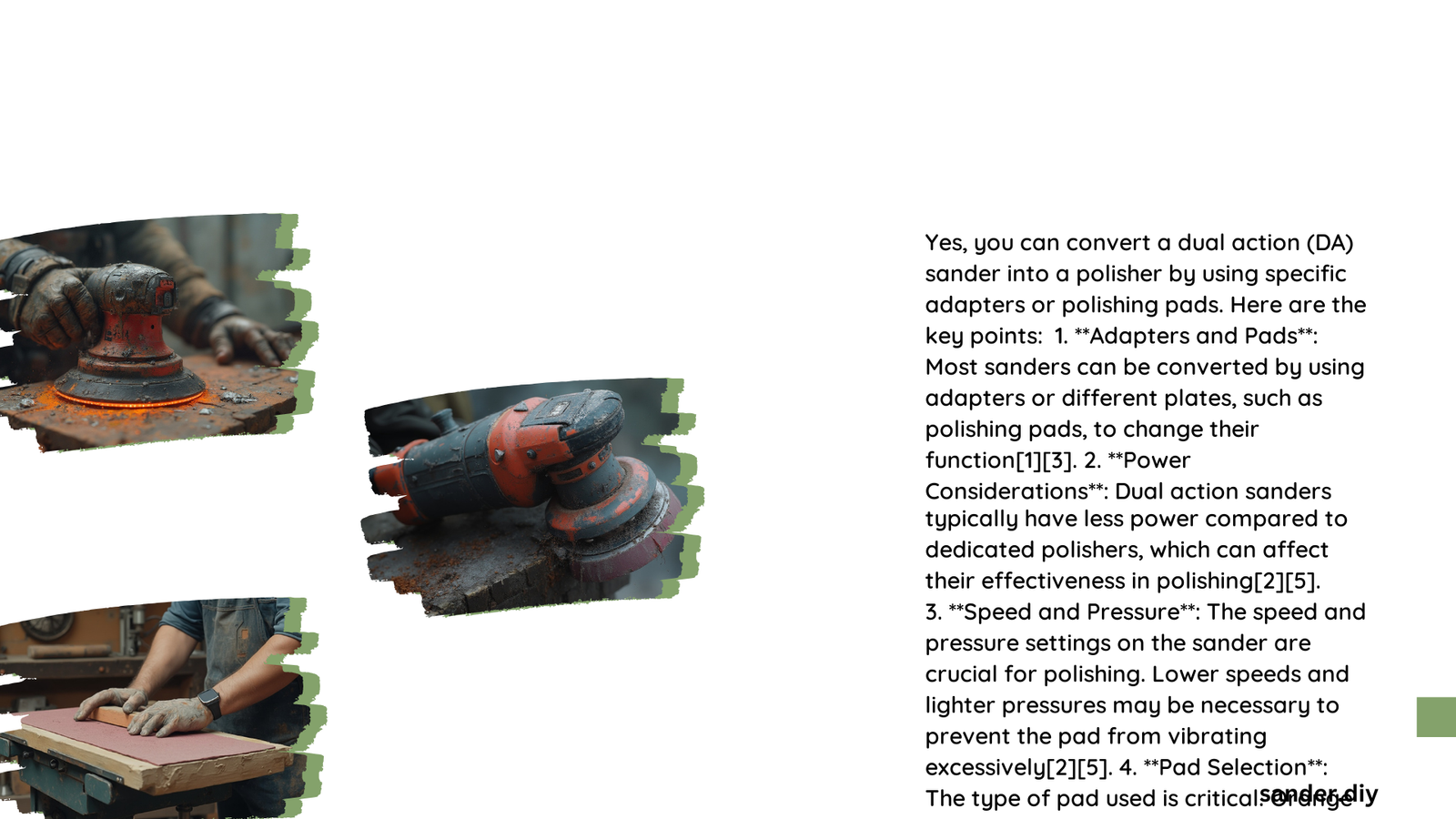Converting a dual action (DA) sander into a polisher is possible with the right modifications and accessories. This transformation allows for versatile use of your existing tool, potentially saving money on separate equipment. However, it’s crucial to understand the limitations and necessary adjustments to achieve optimal results. This article explores the feasibility, methods, and considerations for turning a DA sander into an effective polishing tool.
What Are the Key Considerations for Converting a DA Sander to a Polisher?
When contemplating the conversion of a dual action sander into a polisher, several factors come into play:
- Pad Compatibility
- Motor Power
- Speed Settings
- Vibration Control
- Intended Use
Let’s delve deeper into each of these aspects to understand their importance in the conversion process.
How Does Pad Compatibility Affect the Conversion?
Pad compatibility is crucial when transforming your DA sander into a polisher. Here’s what you need to know:
- Pad Types: Polishing requires specific pad types, typically foam or microfiber.
- Sizes: Common polishing pad sizes include 5\”, 6\”, and 6.5\”.
- Attachment: Most DA sanders use a hook and loop system, making pad changes relatively simple.
| Pad Type | Best For | Characteristics |
|---|---|---|
| Foam | General polishing, waxing | Various densities for different levels of cutting and finishing |
| Microfiber | Correction work, defect removal | More aggressive, suitable for initial stages of polishing |
What Role Does Motor Power Play in the Conversion?
The power of your DA sander’s motor significantly impacts its effectiveness as a polisher:
- Lower wattage motors (around 300W) may struggle with heavy-duty polishing tasks.
- More powerful motors provide better performance, especially with aggressive polishes.
- Inadequate power can lead to bogging down when applying pressure.
How Do Speed Settings Influence Polishing Performance?
Proper speed settings are essential for effective polishing:
- Start at lower speeds (setting 2-3) to spread polish evenly.
- Gradually increase speed as needed for working the polish into the surface.
- Higher speeds are typically used for final buffing and shine enhancement.
What Impact Does Vibration Have on the Polishing Process?
Vibration can be a significant factor when using a DA sander as a polisher:
- Lower-end sanders may produce more vibration, affecting comfort and control.
- Excessive vibration can lead to uneven polishing results.
- Look for sanders with built-in vibration reduction features for better performance.
What Are the Steps to Convert a DA Sander into a Polisher?
Converting your DA sander into a polisher involves several steps:
- Acquire Polishing Pads: Purchase foam or microfiber pads designed for polishing.
- Check Backing Plate: Ensure your sander’s backing plate is compatible with polishing pads.
- Select Appropriate Polishing Compounds: Choose compounds suitable for your specific polishing needs.
- Adjust Technique: Adapt your sanding technique to suit polishing requirements.
What Are the Potential Limitations of Using a Converted DA Sander for Polishing?
While converting a DA sander to a polisher is possible, it’s important to be aware of potential limitations:
- Power Constraints: Some DA sanders may lack the power for heavy-duty polishing tasks.
- Heat Generation: Extended use may cause overheating in tools not designed for prolonged polishing.
- Precision: Purpose-built polishers might offer more refined control for professional-level work.
How Does Cost Factor into the Conversion Decision?
Consider the following cost aspects when deciding to convert your DA sander:
- Pad Costs: A set of quality polishing pads can range from $20 to $100+.
- Polishing Compounds: Prices vary based on quality and brand, typically $10-$50 per bottle.
- Potential Savings: Converting may be more cost-effective than purchasing a separate polisher.
What Are the Best Practices for Using a Converted DA Sander as a Polisher?
To maximize the effectiveness of your converted DA sander, follow these best practices:
- Work in small sections (approximately 2×2 feet).
- Apply moderate, even pressure to maintain pad contact.
- Use appropriate speed settings for each polishing stage.
- Clean pads regularly to prevent compound buildup.
- Allow the tool to cool down periodically during extended use.
By adhering to these guidelines, you can effectively use your converted DA sander for many polishing tasks, though it may not fully replace a dedicated polisher for all applications.
References:
1. RedFlagDeals Forum
2. YouTube – M&K
3. AutogeekOnline.net

